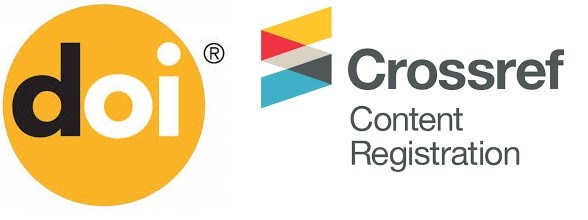"استكشاف إمكانيات لوحة المفاتيح العربية لتعلم الكتابة العربية / مهارة الكتابة بالنهج التذكيري في الجامعة الإسلامية العالمية دار اللغة والدعوة. "
DOI:
https://doi.org/10.32699/liar.v8i2.7959الكلمات المفتاحية:
لوحة المفاتيح العربية، الذاكرة، مهارات الكتابةالملخص
في العصر الحديث، لم يعد مصطلح "الأمية" يشير إلى عدم القدرة على القراءة والكتابة؛ بل أصبح يشير إلى أولئك الذين لا يستطيعون تشغيل الكمبيوتر، وخاصة المهارة الأساسية في الكتابة. ومع ذلك، لا يزال العديد من الطلاب يواجهون صعوبات عند الكتابة باستخدام لوحة المفاتيح العربية. تهدف هذه الدراسة إلى استكشاف فعالية استخدام لوحة المفاتيح العربية مع أسلوب الذاكرة لتحسين مهارات الكتابة باللغة العربية في جامعة UII دار اللغة والدعوة. بناءً على سنوات من الخبرة في استخدام وتعليم لوحة المفاتيح العربية، تُظهر هذه البحث أن الطلاب يمكنهم إتقان مهارات الكتابة الأساسية في يوم إلى ثلاثة أيام مع ثلاث جلسات، بينما يمكن تحقيق الطلاقة في الكتابة خلال أسبوع أو أكثر. من المتوقع أن تُنتج هذه الدراسة كتاباً ماهرين في استخدام لوحة المفاتيح العربية، مما يزيد من الكفاءة في عملية الكتابة. كما تدعم نتائج هذه الدراسة المقابلات مع الطلاب ونتائج ممارسات الكتابة لديهم.
الكلمات المفتاحية: لوحة المفاتيح العربية، الذاكرة، مهارات الكتابة.
المراجع
Alexander, K. P. (2023). Reconceptualizing literacy: Experimentation and play in audio literacy narratives. Computers and Composition, 69, 102790. https://doi.org/10.1016/j.compcom.2023.102790
Alharbi, W. (2023). AI in the Foreign Language Classroom: A Pedagogical Overview of Automated Writing Assistance Tools. Education Research International, 2023, 1–15. https://doi.org/10.1155/2023/4253331
Baharun, H. (2018). PENGUATAN DAYA INGAT MAHASANTRI MELALUI MNEMONIC LEARNING. PEDAGOGIK: Jurnal Pendidikan, 5(2), Article 2. https://doi.org/10.33650/pjp.v5i2.630
Benabid Najjar, A. (2013). Toward an optimized arabic keyboard design for single-pointer applications. Proceedings of the 15th Annual Conference Companion on Genetic and Evolutionary Computation, 1717–1718. https://doi.org/10.1145/2464576.2480784
Benabid Najjar, A., Al-Wabil, A., Hosny, M., Alrashed, W., & Alrubaian, A. (2021). Usability Evaluation of Optimized Single-Pointer Arabic Keyboards Using Eye Tracking. Advances in Human-Computer Interaction, 2021, 1–14. https://doi.org/10.1155/2021/6657155
Buys, T., Casteleijn, D., Heyns, T., & Untiedt, H. (2022). A Reflexive Lens on Preparing and Conducting Semi-structured Interviews with Academic Colleagues. Qualitative Health Research, 32(13), 2030–2039. https://doi.org/10.1177/10497323221130832
Crandall, R., & Karadoğan, E. (2021). Designing Pedagogically Effective Haptic Systems for Learning: A Review. Applied Sciences, 11(14), 6245. https://doi.org/10.3390/app11146245
Creswell, J. W. (2021). A Concise Introduction to Mixed Methods Research. SAGE Publications, Inc.
Creswell, J. W., & Creswell, J. D. (2020). Research Design: Qualitative, Quantitative, and Mixed Methods Approaches. SAGE Publications.
Fix, G. M., Kim, B., Ruben, M. A., & McCullough, M. B. (2022). Direct observation methods: A practical guide for health researchers. PEC Innovation, 1, 100036. https://doi.org/10.1016/j.pecinn.2022.100036
Haleem, A., Javaid, M., Qadri, M. A., & Suman, R. (2022). Understanding the role of digital technologies in education: A review. Sustainable Operations and Computers, 3, 275–285. https://doi.org/10.1016/j.susoc.2022.05.004
Mahmudah, M., Nurhanifansyah, N., & Khalid, S. M. S. bin. (2024). Psycholinguistic Approaches to Enhancing Arabic Speaking Proficiency through Comic Strips. Arabiyatuna: Jurnal Bahasa Arab, 8(2), 804–826. https://doi.org/10.29240/jba.v8i2.11349
Majrashi, K. (2022). Voice Versus Keyboard and Mouse for Text Creation on Arabic User Interfaces. The International Arab Journal of Information Technology. https://doi.org/10.34028/iajit/19/1/15
Nasiha, W., Afifah, N., & Amir, A. N. (2023). Design of a Website-Based Arabic Typing Application for Students of Arabic Language Education Program at University. Assyfa Learning Journal, 1(1), 12–24. https://doi.org/10.61650/alj.v1i1.4
Norman, D. (2013). The Design of Everyday Things: Revised and Expanded Edition. Basic Books. https://books.google.co.id/books?id=nVQPAAAAQBAJ
Rahayu, A. P., Abdullah, D. S., & Setiady, A. A. (2023). PENGARUH PENGAPLIKASIAN METODE MNEMONIC TERHADAP DAYA INGAT BELAJAR SISWA PADA MATA PELAJARAN PENDIDIKAN AGAMA ISLAM. Jurnal Al Burhan, 3(1), 1–9. https://doi.org/10.58988/jab.v3i1.102
Ramli, A. H., Said, R. R., Md Sabil, A., & Mohd Rasdi, R. (2022). Mnemonic Learning Technique in Review Writing Skills. International Journal of Academic Research in Progressive Education and Development, 11(4), Pages 923-931. https://doi.org/10.6007/IJARPED/v11-i4/16039
Refdianti, A., Afwan, A., & Darman, I. H. (2024). الوسئل الرقمية وغير الرقمية لترقية المهارات اللغوية. Lisanan Arabiya: Jurnal Pendidikan Bahasa Arab, 8(1), 130–144. https://doi.org/10.32699/liar.v8i1.5834
Soleckah, U. K., Putra, W. H., & Salma, K. N. (2023). Taḥlīl al-Akhṭā’ al-Naḥwiyyah wal al-Ṣarfiyyah wa al-Imlāiyyah fī Kitābah al-Insyā’ bi al-Ma’had. Lisanan Arabiya: Jurnal Pendidikan Bahasa Arab, 7(2), 161–176. https://doi.org/10.32699/liar.v7i2.5438
التنزيلات
منشور
إصدار
القسم
الرخصة
Authors who publish with this journal agree to the following terms:
a. Authors retain copyright and grant the journal right of first publication with the work simultaneously licensed under a Creative Commons Attribution-ShareAlike 4.0 International License. that allows others to share the work with an acknowledgement of the work's authorship and initial publication in this journal.
b. Authors are able to enter into separate, additional contractual arrangements for the non-exclusive distribution of the journal's published version of the work (e.g., post it to an institutional repository or publish it in a book), with an acknowledgement of its initial publication in this journal.
c. Authors are permitted and encouraged to post their work online (e.g., in institutional repositories or on their website) prior to and during the submission process, as it can lead to productive exchanges, as well as earlier and greater citation of published work (See The Effect of Open Access).












